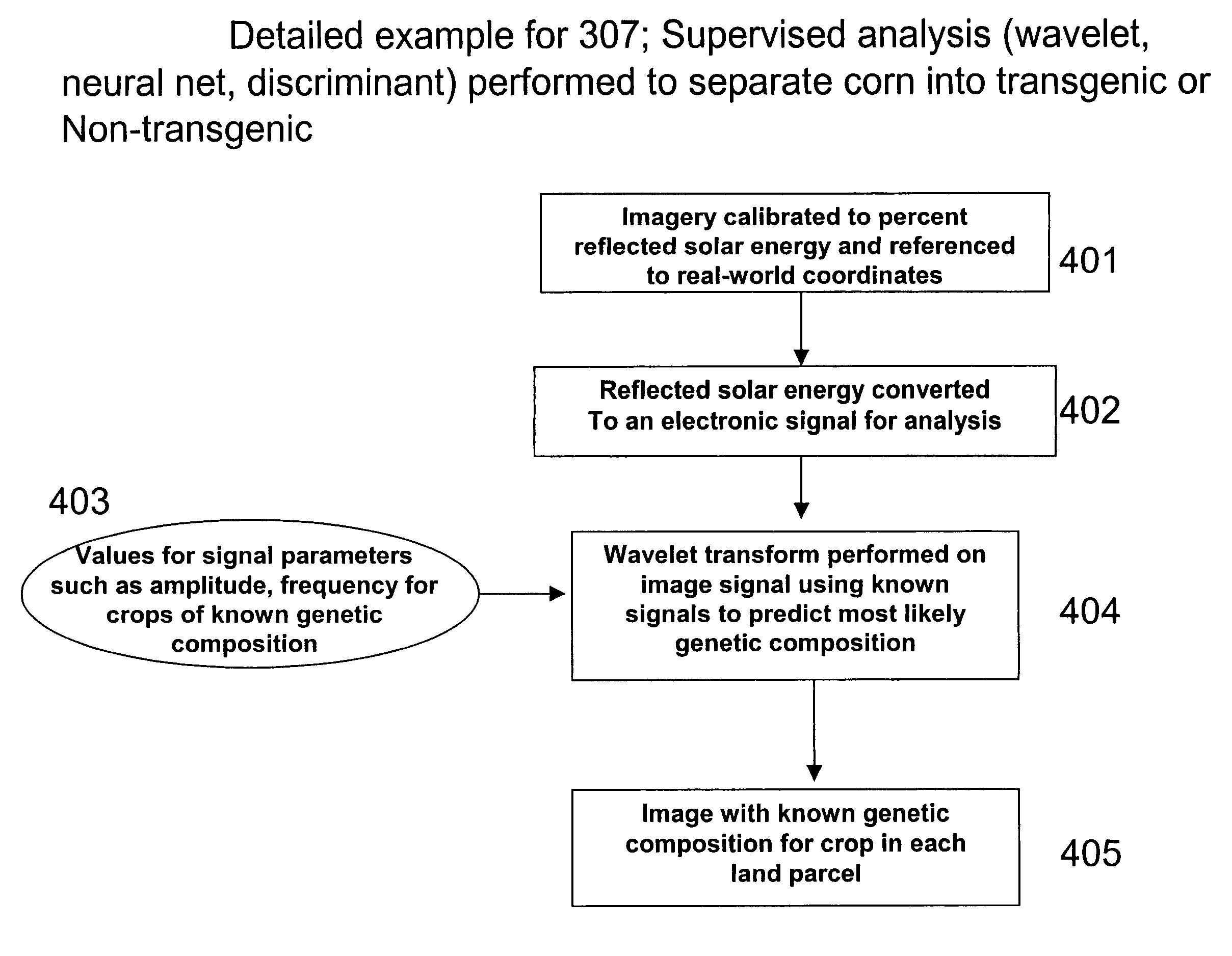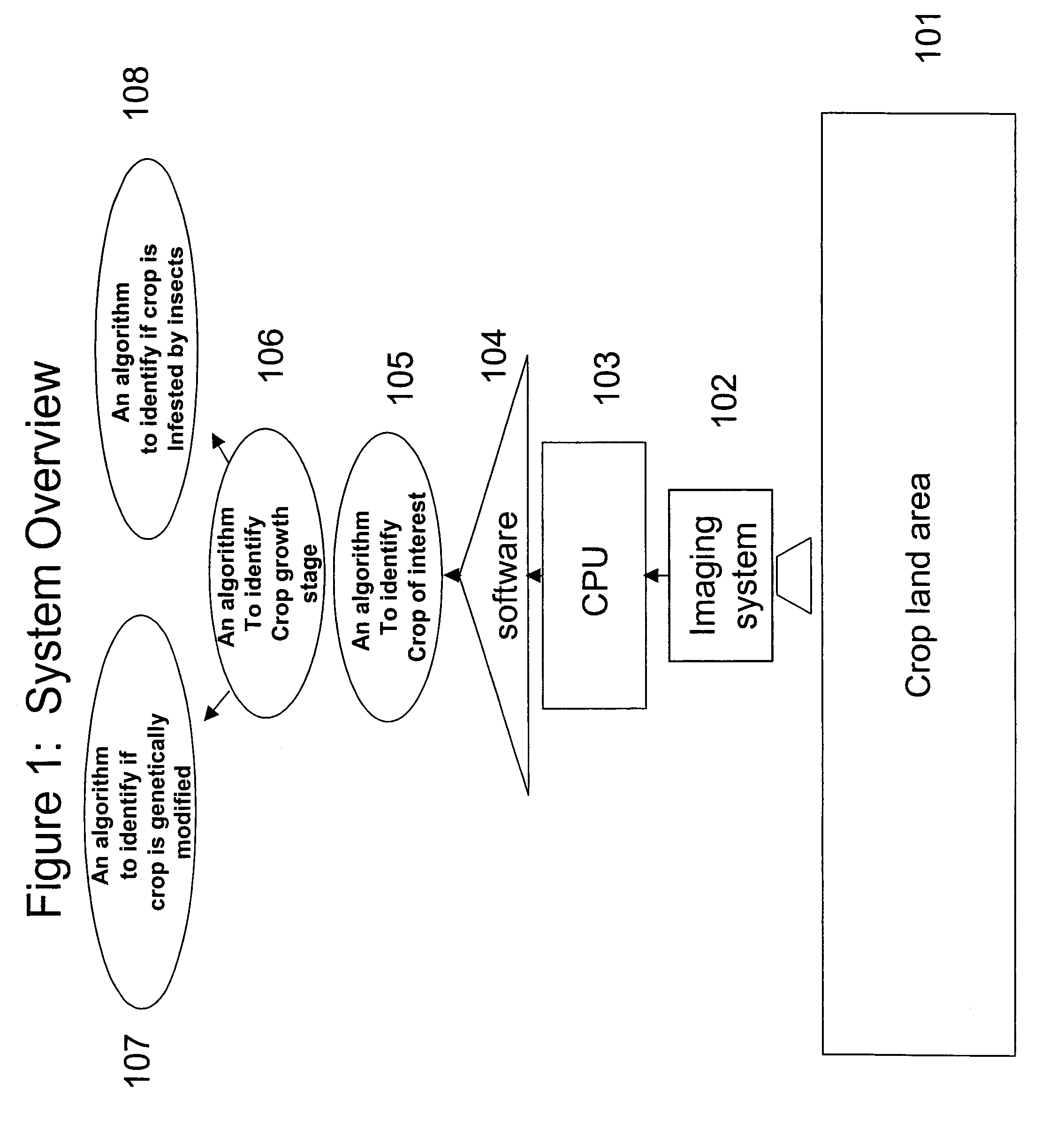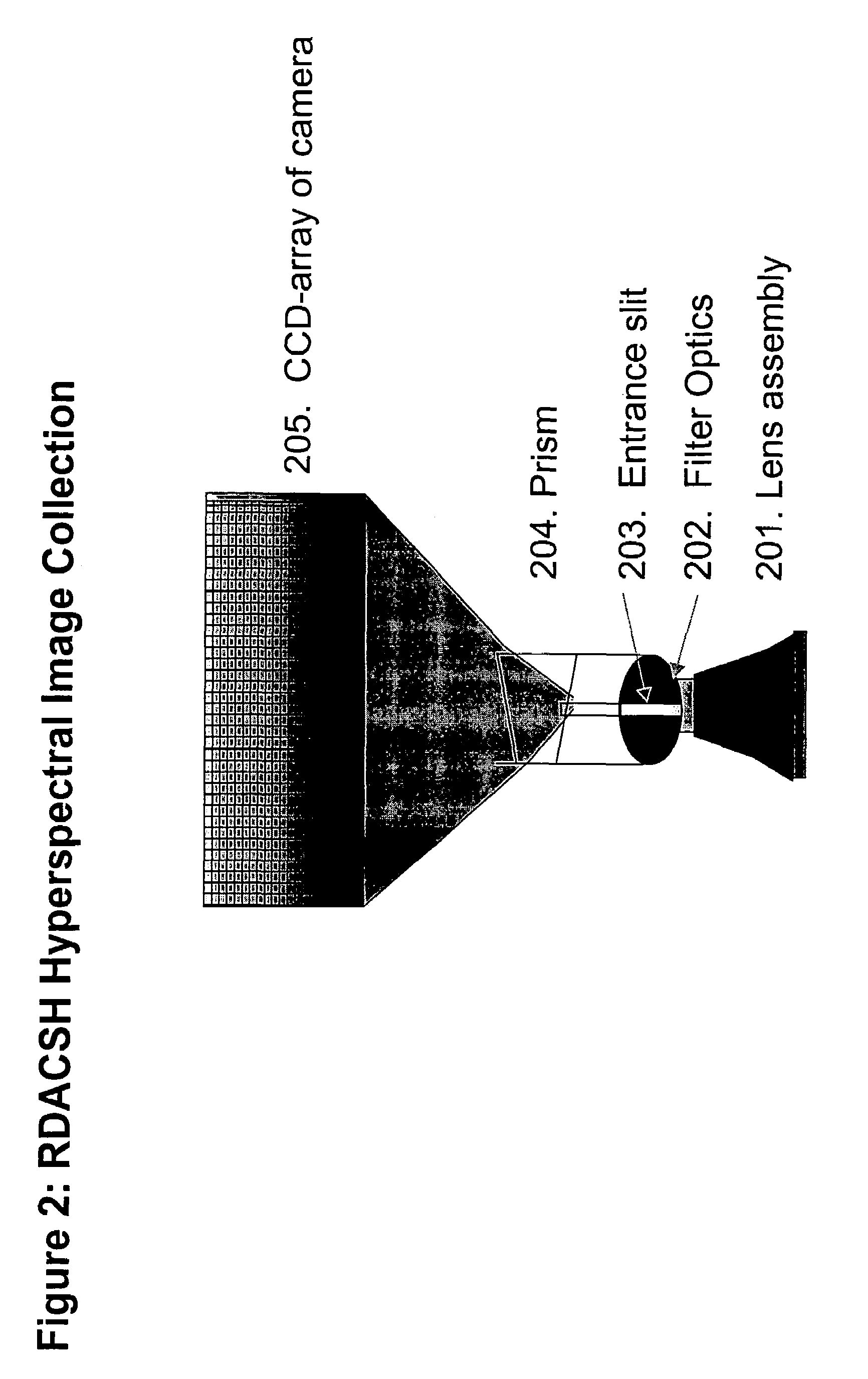Optical system for plant characterization
a plant characterization and optical system technology, applied in the field of optical systems for plant characterization, can solve the problems of transgenic plants losing their registration or right to sell hybrids, policing the regulation, and the evolution of resistance to expressed toxins
- Summary
- Abstract
- Description
- Claims
- Application Information
AI Technical Summary
Benefits of technology
Problems solved by technology
Method used
Image
Examples
Embodiment Construction
[0040]Referring to FIG. 1, a system overview is shown where the system is used for delineation of the transgenic crops includes collection of imagery from a hyperspectral camera or other multiband imaging device for the collection of multi-band images (102) over a land surface area including, for example, transgenic and non-transgenic crops as well as other land cover features (101). The hyperspectral camera system typically utilizes a central processing unit (103) that can rapidly move data from ram to hard drive storage and store large amounts of data. Software (104) for manipulation of the data after collection is used for image analysis. This software may be configured to convert raw digital values from the camera system to ground referenced, calibrated imagery (104).
[0041]The calibrated imagery will give information on reflected solar energy. The calibrated imagery may then be manipulated and analyzed by algorithms to identify physical characteristics such as crop types (105), ...
PUM
| Property | Measurement | Unit |
|---|---|---|
| altitude | aaaaa | aaaaa |
| altitude | aaaaa | aaaaa |
| length | aaaaa | aaaaa |
Abstract
Description
Claims
Application Information
 Login to View More
Login to View More - R&D
- Intellectual Property
- Life Sciences
- Materials
- Tech Scout
- Unparalleled Data Quality
- Higher Quality Content
- 60% Fewer Hallucinations
Browse by: Latest US Patents, China's latest patents, Technical Efficacy Thesaurus, Application Domain, Technology Topic, Popular Technical Reports.
© 2025 PatSnap. All rights reserved.Legal|Privacy policy|Modern Slavery Act Transparency Statement|Sitemap|About US| Contact US: help@patsnap.com



